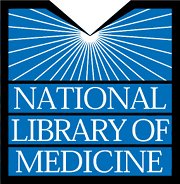NewsdayMay 13, 2014
Q: How should parents decide whether to take a child to a pediatric urgent care center or an emergency room?
A: First, parents should try to reach their child’s pediatrician; after office hours, doctors usually have a pediatrician on call, says Dr. Jahn Avarello, who says he “sits in both seats” as the doctor in charge of the pediatric emergency room and the pediatric urgent care center of the Cohen Children’s Medical Center in New Hyde Park, N.Y. “Often there are nuances that the primary care provider can detect by phone,” Avarello said. The pediatrician can help recommend the appropriate and reputable venue, he said.
If the pediatrician can’t be reached, or time is of the essence, parents should act based on the severity of the situation, Avarello said. With abdominal pain, a severely broken bone or respiratory distress, a child should be taken to an ER, which can do CT scans and ultrasounds, he said.
In a less acute situation, a pediatric urgent care center may have a lower insurance co-payment and be able to address the problem more quickly because of the elimination of adult patients vying for attention, he says. Avarello recommends pediatric urgent care centers rather than general centers because they are more likely to have pediatricians or pediatric emergency medicine specialists on duty at all times. Many have X-ray equipment; many are festively decorated. “It’s a lot more comforting of an environment and a lot less likely that the child is going to be scared,” he says.
(Email Beth Whitehouse at beth.whitehouse@newsday.com.)eprint of this story
Read more here: http://www.mercedsunstar.com/2014/05/13/3646031/parental-guidance-urgent-care.html#storylink=cpy

 BY BETH WHITEHOUSE
BY BETH WHITEHOUSE
 By RYAN JASLOW/CBS NEWS
By RYAN JASLOW/CBS NEWS
 By Margaret Farley Steele
By Margaret Farley Steele The number of U.S. children estimated to have autism could decline as a result of new criteria to diagnose the condition, a new study suggests.
The number of U.S. children estimated to have autism could decline as a result of new criteria to diagnose the condition, a new study suggests. , some people were concerned that the new criteria would exclude some children who previously would have been diagnosed with autism, leaving these children without access to educational services available to children with autism.
, some people were concerned that the new criteria would exclude some children who previously would have been diagnosed with autism, leaving these children without access to educational services available to children with autism.

